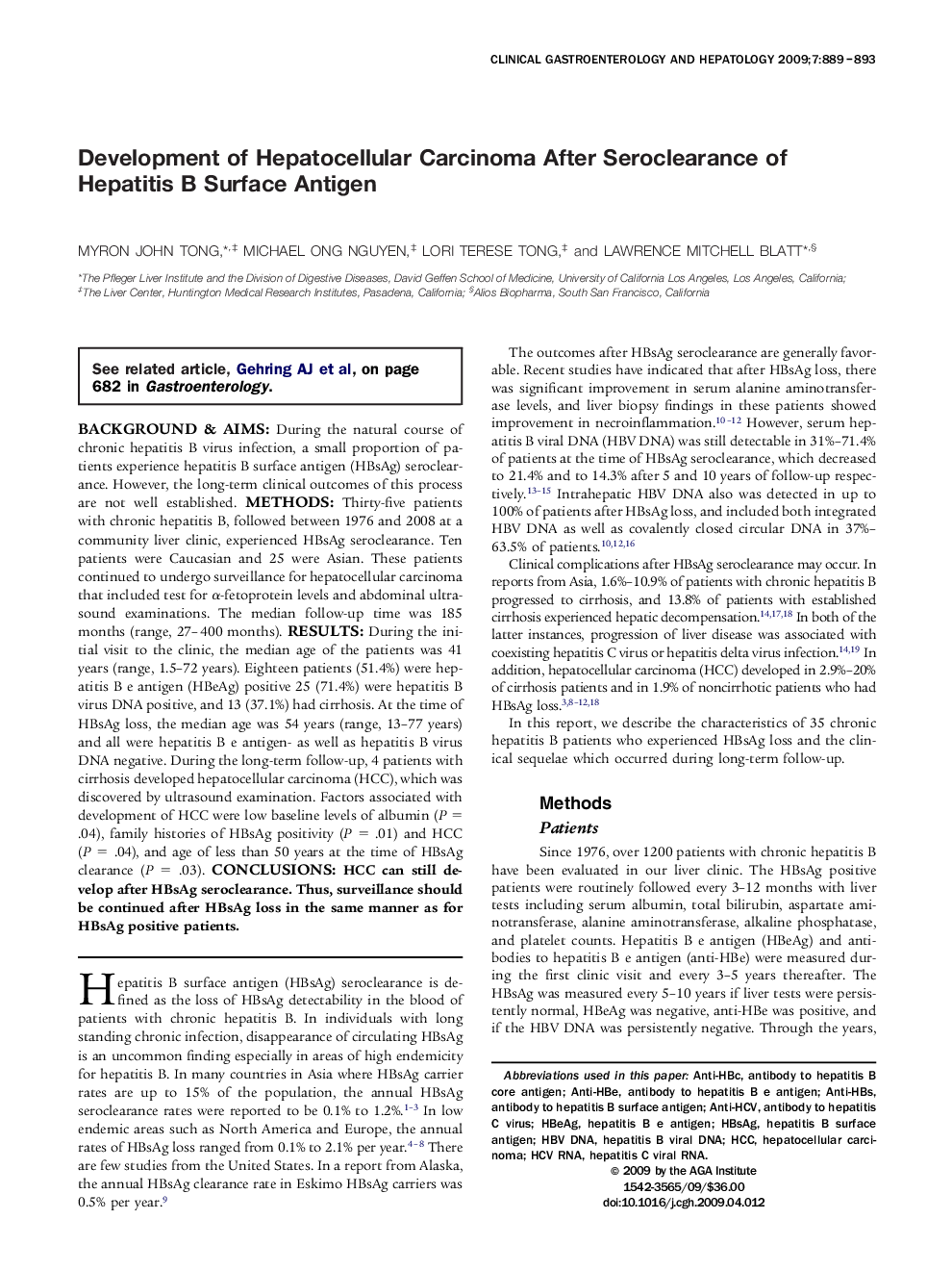| Article ID | Journal | Published Year | Pages | File Type |
|---|---|---|---|---|
| 3284423 | Clinical Gastroenterology and Hepatology | 2009 | 5 Pages |
Background & AimsDuring the natural course of chronic hepatitis B virus infection, a small proportion of patients experience hepatitis B surface antigen (HBsAg) seroclearance. However, the long-term clinical outcomes of this process are not well established.MethodsThirty-five patients with chronic hepatitis B, followed between 1976 and 2008 at a community liver clinic, experienced HBsAg seroclearance. Ten patients were Caucasian and 25 were Asian. These patients continued to undergo surveillance for hepatocellular carcinoma that included test for α-fetoprotein levels and abdominal ultrasound examinations. The median follow-up time was 185 months (range, 27–400 months).ResultsDuring the initial visit to the clinic, the median age of the patients was 41 years (range, 1.5–72 years). Eighteen patients (51.4%) were hepatitis B e antigen (HBeAg) positive 25 (71.4%) were hepatitis B virus DNA positive, and 13 (37.1%) had cirrhosis. At the time of HBsAg loss, the median age was 54 years (range, 13–77 years) and all were hepatitis B e antigen- as well as hepatitis B virus DNA negative. During the long-term follow-up, 4 patients with cirrhosis developed hepatocellular carcinoma (HCC), which was discovered by ultrasound examination. Factors associated with development of HCC were low baseline levels of albumin (P = .04), family histories of HBsAg positivity (P = .01) and HCC (P = .04), and age of less than 50 years at the time of HBsAg clearance (P = .03).ConclusionsHCC can still develop after HBsAg seroclearance. Thus, surveillance should be continued after HBsAg loss in the same manner as for HBsAg positive patients.
